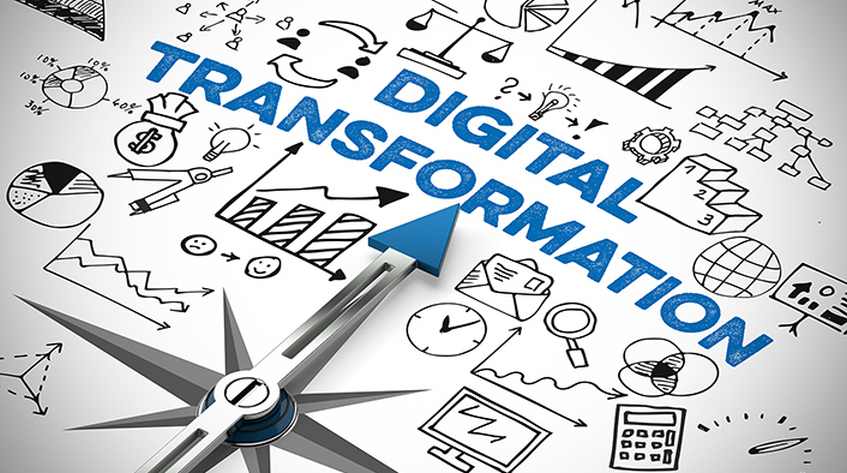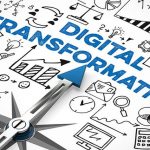How to use digital transformation to power through the “new normal”

COVID-19 wasn’t a time-limited experience that would affect our lives and then leave us to get back to normal. Even when we succeed in relegating the novel coronavirus to the level of “just another virus” that really is no more dangerous than the flu, the effects of the 2020 global pandemic will continue to be felt, primarily in terms of our relationship with technology.
A report by McKinsey calculates that digital transformation as a whole accelerated by approximately 7 years in just the first few months of the pandemic. It’s not just that factories sped up the adoption of digital analytics platforms or enterprises offered cloud-based project management tools for people working from home. Tech adoption affected almost every consumer, employee, and individual.
Ecommerce surged as we embraced buying online, with online sales as a percentage of total retail sales jumping by up to 5x during the pandemic. Video conferencing became the norm not just for business meetings, but for families and friends to keep in touch. Online banking, contactless payment solutions, and telehealth all became familiar experiences, and it’s likely that they are here to stay.
Research by the Pew center among a range of thought leaders found a “nearly universal view that people’s relationship with technology will deepen as larger segments of the population come to rely more on digital connections for work, education, health care, daily commercial transactions and essential social interactions.”
Digital transformation resolved many of the issues raised by COVID-19, but it brought new challenges of its own. However, there’s good reason to be optimistic that ongoing digitalization can deliver solutions to these new difficulties as well.
Knowledge workers want the best of both worlds
One of the first and fastest changes between pre-COVID and post-COVID life is that everyone shifted to working from home. After a year or more of choosing their own work hours, few people are willing to go back to the pre-pandemic expectations of being in the office 9-5 or more.
At the same time, many miss socializing around the water cooler. After hastily enabling remote offices, digitalized enterprises are gradually maturing to support hybrid workplaces which allow employees to seamlessly slide between working at their desk on-premises and working from home.
Digital wellness programs help blur the lines between work and home. Cloud tools offer secure access to the same documents and cloud desktop no matter where you log in, and advanced communication tools enable smooth conversations and brainstorming between on-site and remote colleagues. Additionally, virtual reality (VR) and artificial intelligence (AI) tools deliver remote onboarding, employee training, and upskilling, to help everyone master the new digital normal no matter where they are as well as supporting richer collaborations.
Essential workers feel abandoned
However, the switch to remote work has widened the chasm between white-collar knowledge workers who are able to work from home and blue-collar workers who have no choice but to come into work in person. There’s a risk that the latter will erupt in resentment and frustration against the former, especially if they feel abandoned to infection.
Again, tech innovation can create safer workplaces for those who have to work in person. The use of UV light for faster, more effective sanitization advanced by leaps and bounds during the pandemic. IoT sensors measure CO2 levels in the atmosphere and automate ventilation to improve air circulation and reduce infection risks.
Contact-free communication devices, digital ordering platforms for restaurants, and sensors that help enforce social distancing help protect essential workers, while remote monitoring equipment for everything from heavy manufacturing plants to healthcare can reduce the frequency that healthcare workers are required to be present at the workplace.
Chronic health conditions are on the rise
The new phenomenon of long covid, or long-haul covid, drastically increased the number of people with chronic health conditions, while the disease itself exacerbated existing conditions, and still more people were left disabled or semi-able by treatable illnesses that went unnoticed due to the pressure of the pandemic.
At the same time, medical personnel are burned out and exhausted, having been hit particularly hard by COVID-19 and its aftereffects. The end result is that more people than ever before are relying on weak and faltering healthcare services.
Once again, tech can ride to the rescue. Smart devices that monitor multiple health metrics can now be embedded in clothing as well as in implanted medical devices. They provide even earlier alerts about potential health crises, so medical personnel can act quickly to prevent them, and enable patients to be kept under close watch without occupying much-needed hospital beds. Higher quality video conferencing supports better telehealth consultations, while also delivering more accurate images and scans to medical professionals for improved diagnosis.
Privacy and security fears have increased
Unfortunately, the pandemic was accompanied by an enormous spike in phishing incidents, pandemic-related scams, and large-scale data breaches, as cybercriminals took advantage of the endemic chaos and stress.
While many people are nervous about the use of AI and machine learning (ML) for increased surveillance, that anxiety may soon die down as familiarity increases. The generation which is used to accepting cookies, locking their phones with a thumbprint, and giving permission to social media apps that track their location, is also becoming more comfortable with anti-fraud technology that uses unique identifiers to spot and block scammers. ML tools can detect fraudulent withdrawal requests or account orders within nanoseconds, as well as picking up on impending cybersecurity threats and taking steps to mitigate them before they arrive.
Digital transformation can hold the cure to post-COVID ills
Digital transformation accelerated by the pandemic, as well as the impact of COVID-19 itself, has left us in a world that is significantly different than it was in 2019. There’s no way to turn back time, but fortunately, the same digital transformation has left us with ways to give knowledge workers the flexible work experience, protect in-person employees, improve healthcare, and allay cybersecurity issues in order to create a safe, secure “new normal.”




